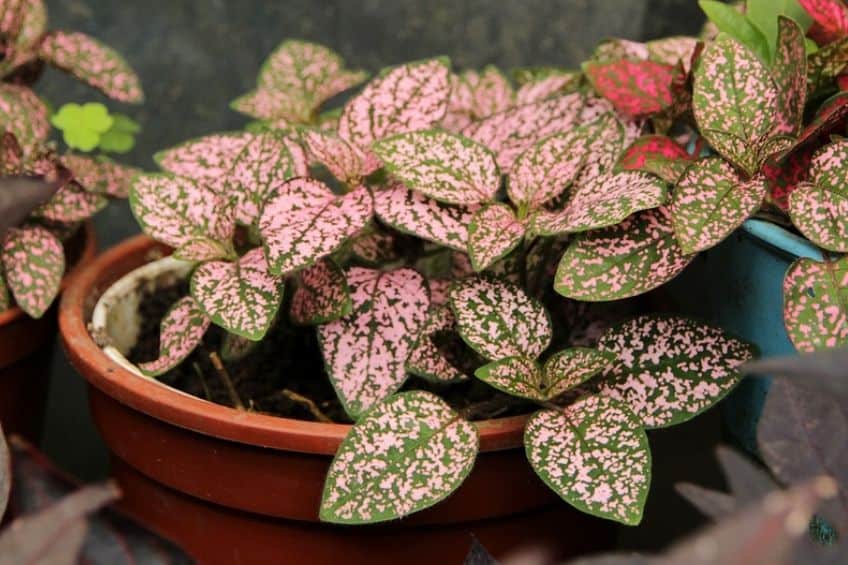Terrariums are essentially mini plant ecosystems nurtured in glass jars. You could compare them to small greenhouses with plants grown inside!.
Closed terrariums are definitely a perfect way to bring a little bit of nature’s beauty indoors. For some insight, these terrariums are essentially mini plant ecosystems nurtured in glass jars. You could compare them to small greenhouses with plants grown inside!.
They don’t need much care and can be put on top of almost any hard surface in the office or home to make the space look better and livelier. These small plant homes are not only lovely to look at, but they’re also a great way to enjoy nature in places where there isn’t much room outside.
Are Polka Dot Plants Good for Terrariums?
The polka dot plant, also known as Hypoestes phyllostachya, is a popular indoor plant that is well-suited for terrariums Its spotted foliage adds visual interest and color to enclosed glass environments Here’s an overview of why polka dot plants thrive in terrariums.
Ideal Growth Conditions
Polka dot plants prefer warm, humid conditions with indirect sunlight. Terrariums create a miniature greenhouse environment that replicates the polka dot plant’s native tropical climate. The high humidity levels prevent the foliage from drying out. Polka dot plants enjoy consistent moisture.
In terrariums, polka dot plants only reach 10-15 inches tall. The compact size prevents overgrowth within the confined space. Outdoors, the shrub-like plants can grow up to 3 feet tall. The constrained terrarium environment restricts rapid growth.
Low Maintenance
Once established in a terrarium, polka dot plants require minimal care Their shallow roots do not need large pots or frequent repotting. The high humidity minimizes watering needs Occasional trimming keeps the plant tidy and maintains a bushy habit.
Polka dot plants are not heavy feeders. Adding a slow-release fertilizer to the potting mix provides nutrients for several months. Their resilient nature allows them to bounce back after periods of neglect. Ideal for beginner gardeners or gift recipients.
Easy Propagation
Snipping stem cuttings from a mature polka dot plant quickly generates new plants. Rooting the cuttings in water is simple and effective. The rapid growth pattern continually produces new stems for propagation. Filling a terrarium with several polka dot plant starts results in a full, bushy interior within a few months.
Visual Interest
The signature polka dot foliage adds delightful whimsy to terrariums. The contrasting spots stand out against the green leaf background. Different cultivars feature various colors like white, pink, red, or purple. Mixing several varieties creates an eye-catching display. The colorful leaves pair well with other shade-loving plants like ferns or pilea.
Pet-Friendly
Polka dot plants are non-toxic for humans and pets. Their popularity as a houseplant makes them a safe choice for homes with curious cats or dogs. Terrariums often sit within reach of pets, so toxic plant species can pose a safety risk. The polka dot plant’s safe profile is ideal for pet-friendly environments.
Versatile Uses
While the polka dot plant shines in terrarium settings, it also thrives as a houseplant or in outdoor garden beds. The compact varieties work well in containers on patios and decks. Gardeners in USDA Zones 10-11 can grow polka dot plants in shady garden beds. The eye-catching foliage adds long-lasting color from spring to fall.
The polka dot plant checks all the boxes as an easy care, rapidly propagating, visually stunning terrarium specimen. Their petite size, low maintenance needs, and vibrant foliage make them a top choice. Whether displayed alone or mixed with other plants, polka dot plants are sure to be the star attraction.

The Highly Popular Tillandsia
Tillandsia, which are also known as “air plants,” are a popular choice for many terrarium enthusiasts because they are easy to care for and don’t need much soil. These plants are versatile and can grow on a variety of surfaces.
Tillandsia plants in closed terrariums. Photo by
They can do well on tree bark, rocks, pieces of wood, and even shells. This is a feature that makes them quite an ideal choice for terrariums. Air plants also come in a range of colors, from green to silver. There are even some varieties that bloom small, delicate flowers that add to their appeal.
Different Varieties of Miniature Orchids
Orchids are largely known for their beautiful exotic flowers. There are different types of miniature orchids for terrariums depending on one’s preferences. Some key ones include the various varieties of Masdevallia. Others include Phalaenopsis, Angraecum, Platystele, Tolumnia, Dracula, Aerangis, and Lepanthes.
Phalaenopsis in a closed terrarium. Photo by
These plants love highly-humid conditions and hardly grow bigger than the size of a human palm. The lovely thing about them is that they have different parts, like flowers and leaves, that make the terrarium look nice.
Top 5 terrarium plants || Best plants for closed terrestrial terrariums
FAQ
What plants should not be in a terrarium?
Can I put polka dot plant in aquarium?
Do polka dot plants purify air?
